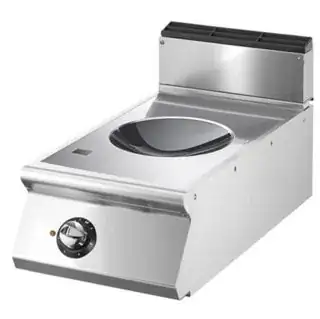TL;DR: you can make this work, but it will require adaptation, and you need to get a high-powered burner
Despite not being Asian, I cook in my woks a lot. When I shopped for a new stove, I chose to get gas, and making wok cooking easy was one of the reasons. Several wok cooking techniques rely heavily on being able to move the wok while continuing to heat it, and only gas permits that.
However, there are folks who disagree, such as Jon Kung. In a video, he demonstrates that you can definitely make fried rice in a wok over induction. You'll notice that his technique is different, though; it's all spatula, and pretty much no shaking the wok. So clearly, it can be done, although I'll note that quality wok induction burners are quite expensive.
"How fast does water boil" is pretty much the exact wrong measure for whether a burner will work for a wok. One rarely, if ever, boils water in a wok. Instead, you need to know:
- What's the maximum temperature that the burner supports? Wok-frying needs to go to at least 500F (260C), and many induction burners stop at 400F or 450F.
- How quickly does the burner return the wok to temperature after ingredients cool it?
It's the latter part that makes conventional electric elements fail for woks; no matter how hot those resistance elements get, they take a long time to get there. Induction is much more promising.
As for heat equivalents: the coventional multiplier for converting electric watts to BTU is 3.41. Thus, the induction burner that Kung recommends would be about (1500 x 3.41) the equivalent of a 5000BTU gas burner, which would be pretty low. However, as you note, a lot of heat is lost by gas burners. Induction is around 90% efficient, whereas gas is as low as 40%.
So that 1500W burner would be equivalent to ( 1500 * 3.41 * (90/40) ) a 11500 BTU gas burner. Still pretty underpowered for stir-frying, though; notice that Kung gets around this by making very small batches. For comparison, I use a 25000BTU gas burner, and restaurant ones go up to 150000. So you're going to want an induction burner that's at least 2500W, which is more easily done in Europe than in the USA, where it would require special wiring in the kitchen.

